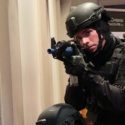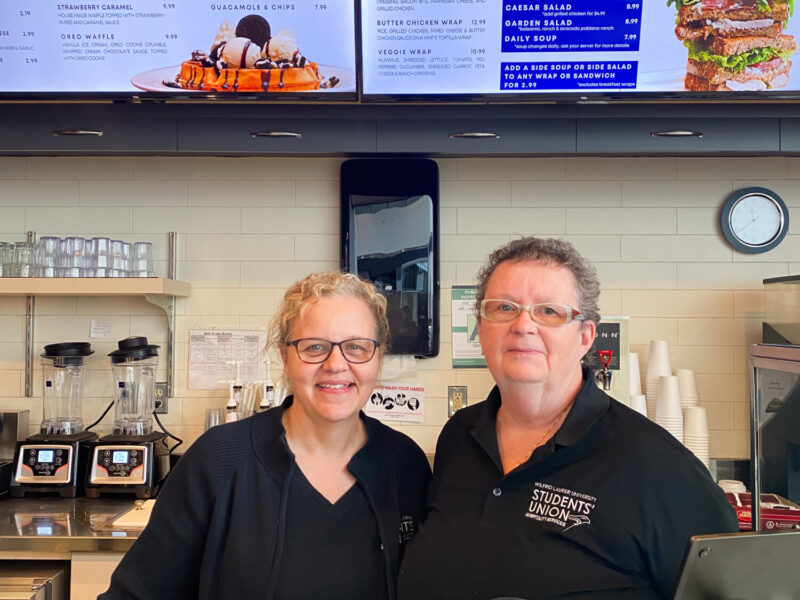On Nov 1, the Sanderson Centre become the training grounds for an armed Emergency Response Team (ERT) from the Brantford and Waterloo Police Services.
The training consisted of a mock active killer situation with a hostage negotiation and lasted from 10 a.m. to 2:30 p.m.
The Sanderson centre became an interesting scene with the presence of dozens of heavily armoured police members, a 19,000 pound light armour vehicle, and a Brantford Police Services drone.
“As a team on our own, we train once a month, but once every year we do a major scenario which utilizes other partner agencies, including the Waterloo police. We deploy a full incident command which we don’t normally do on training days but we’ve got a full man post with an incident commander, which is an instructor from our service. We’ve got negotiators up there that are involved with a negotiation as part of the scenario…it just depends on the scenario, but if it involves the fire department, we’ve got the fire command here as well, hydro might be involved. It all depends on the complexity of the scenario,” stated Sgt. Jim Sawkins.
13 ERT members from Brantford and 20 from Waterloo participated in the training, alongside 24 volunteer students from the Police Foundations program at Mohawk college. The students who benefited greatly from this learning opportunity, played various roles, including victims.
The scenario started with an active shooter entering the theatre. As a show was screening, two suspects walked in and gunshots were fired. A few students simulated injuries and the ERT members did rescues. The first suspect was shot and arrested within 20 seconds of the shooting incident. First aid treatment for the suspect was provided. The second suspect took a hostage, starting a new chain of events in which negotiators become active in the scenario.
Sergeant Chris Grantham, who spent a few months organizing and preparing for this training, emphasized the importance of working together as a team in a high stress situation.
“Because this is an ERT scenario we pulled back patrol (officers) a little bit. Our ER team members were dispatched here with radio calls. And we had myself and other members playing the role of patrol on the radio, just to get the guys more stressed and things like that. That’s the purpose of these scenarios. We want to throw as much stress (as possible). Things are happening and moving fast and you have to make good tactical decisions, and hopefully have a good outcome for the situation,” said Sgt. Grantham.
None of the Emergency Response Team members have any information about the training before it starts. The script for the training and the roles of the shooters and victims is kept strictly secret.
The focus of the trains is to help officers learn to work under intense pressures.
“We basically go through these major incidents and then do a debrief as a whole. Our team, Waterloo’s team, all of the incident command, all of the negotiators, and the role-players get together in one room,” stated Sgt Grantham, “And we go through and just pick apart the scenario and ask ‘why did we do this, why this action instead of this one’, it’s just great for learning; it’s all about moving forward.”
The trainings, while random, are often designed to mimic recent real-life incidents. This training focused on a potential mass shooting scenario in a very public and crowded place.
Sgt. Sawkins expressed that despite Brantford being a smaller city, it is not a city that is immune to attacks of any form.
“We trained after the Century 6 shooting in Colorado. We have also done the Brantford Airport five or six years after 9/11,” stated Sgt Grantham.
The recent deadly shooting in the small town of Sutherland Springs, Texas, and other gun attacks across North America bring to attention to importance of well trained and skilled Emergency Response teams.
Photo c/o Vivian Yan




